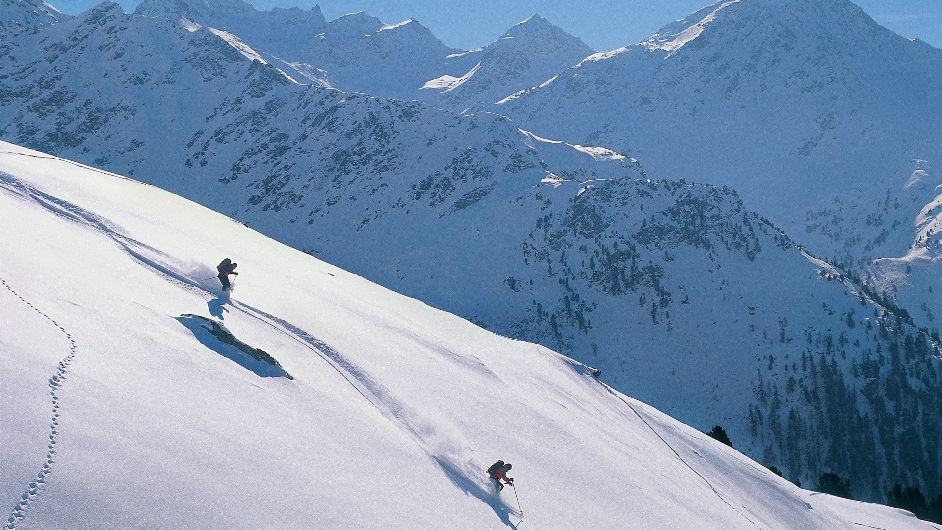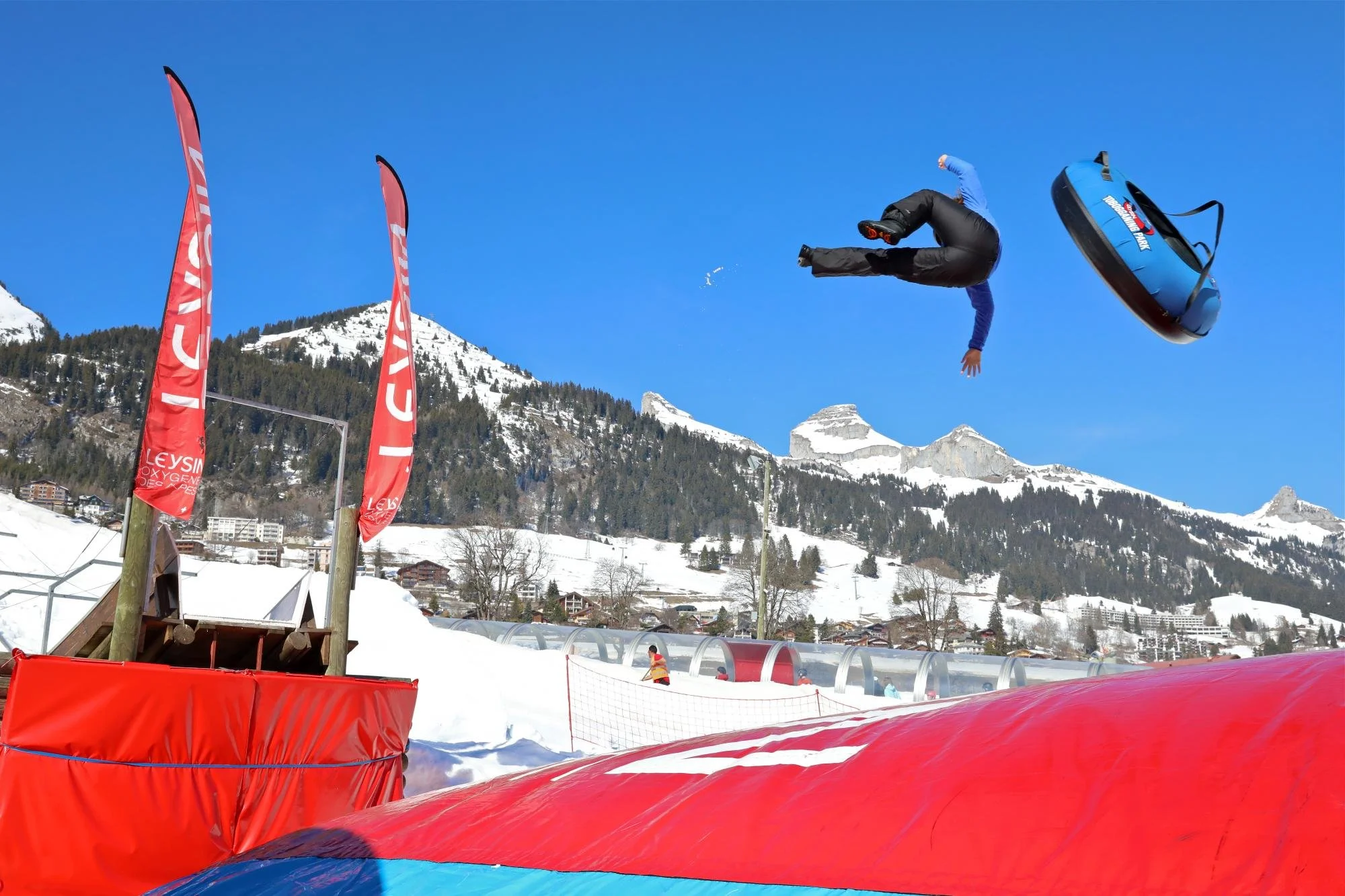WINTER SPORTS
Skiing | Sledding
Switzerland is world-renowned for its winter sports opportunities. Hundreds of slopes scattered around its dozens of mountain ranges provide no shortage of places to sled, snowboard, and ski. Not only are Switzerland’s slopes world-class, they are also incredibly accessible. With Skiing and snowboarding racks are built into trains across Switzerland, winter sports are an integral part of the Swiss culture. Some resorts are intentionally built right next to their train stations, providing the option of hopping off the train while wearing one’s skis and immediately hitting the slopes.
iSki is a must-have app for anyone serious about participating in winter sports here in Switzerland. This free app provides live weather/snow updates and forecasts, ski resort openings and operating times, livecams, a live GPS tracking function, and trail maps among additional helpful functionalities. The app is free and is available both on Google Play and the Apple App Store.
Skiing
It is important to note that because Switzerland has such a vibrant winter sports community (skiing especially) the culture of winter sports is a bit different than in the U.S.
For example, most Swiss children learn to ski when they are toddlers, growing up skiing and snowboarding from a very young age are typical experiences in the lives of the Swiss. As such, the Swiss are excellent skiers and snowboarders. This can be intimidating to many who are new to these activities, but there is still opportunity to learn or improve one’s skiing ability rapidly in Switzerland—just be mindful in choosing what runs and slopes to ski on, keeping in mind the relative skill levels of the skiers around you. It is also important to not that the standards of run difficulty are slightly different and higher here in Switzerland: "Green” runs refer to beginning slopes, “blue” means beginner-intermediate (think U.S. “green runs”), “red” denotes intermediate slopes (U.S. “blue square”), “black” marks expert slopes (U.S. “black/double-black diamond”), and finally “orange” signs indicate extremely difficult slopes. Click here for more information.
Leysin
Day Pass: CHF 44-47. Bring Student ID. More price information here. Half-Pass Train Ticket Cost: CHF 26, round-trip.
The closest ski resort to Château d’Hauteville, this ski resort is unparalleled in its accessibility to our students. The train takes skiers and snowboarders directly to the lifts—all one needs to do is simply hop off the train and ski right to the gondolas. Les Mosses - La Lécherette skiing is great for beginners, with lots of open areas, training runs, and a casual atmosphere that is perfect for beginning skiers. That being said, Leysin offers runs for all skill levels—with over 100 km of ski runs there is always a new trail to explore. It is usually sunny and snow comes early at this location, making it one of the best options for casual weekend ski trips for our students.
Verbier
Day Pass: CHF 55-65, depending on ski zone. More detailed price information here. Half-Pass Train Ticket Cost: CHF 42, round-trip.
This ski resort is the absolute crème de la crème of winter sports. Celebrities, world leaders, the ultra-rich, and world-class athletes come here to experience these world-famous trails. Placed above the beautiful and lively town of Verbier, the 35 lifts take those lucky enough to find themselves at this resort up to some of the most gorgeous and exciting skiing and snowboarding in the world. It is almost impossible to overstate the quality of experience in Verbier—a full ski pass grants access to over 410 km of runs that weave through the middle of Switzerland’s 4 valleys, providing views of the Alps from the Matterhorn to Mont Blanc. Prices of individual tickets depending on which zones one chooses to ski within, but typically range between CHF 55-65 per person per day. More detailed price information here.
Chamonix
Le Pass: €53 per day, with an additional €3 required for a reusable ‘hands-free’ badge. Flix-Bus Cost: CHF 25, round-trip.
At the base of Mont Blanc, the highest summit in the Alps, Chamonix is renowned for its skiing. Located about 2 hours from Vevey and bordering Italy, France, and Switzerland, the town of Chamonix serves as the luxurious base of operations for France’s oldest ski resort. Like most other top-tier European ski resorts, Chamonix offers a over 150km of pistes and over 5,000 acres of off piste-opportunities. There are two types of ski life tickets available for purchase at Chamonix—our students typically purchase the cheaper of the two, The ‘Chamonix Le Pass’ which gives unlimited access to all the Chamonix ski areas, the valley floor ski areas, as well as free use of the Chamonix Bus shuttle service. The pass provides for use of over 22,000m of vertical drop, 115km of piste, and 42 lifts in total.
Saas-FEe
Day Pass: CHF 37, but depends on ski zone. Half-Pass Train Ticket Cost: CHF 32, round-trip.
Sculptures in the Ice Pavilion
The sunny Saas Valley is a famous skiing region not far from Zermatt. Since its reliable slopes are open year round, it’s the favorite training ground for many countries’ ski teams. However, most of its 100km of runs are dedicated to intermediate and beginner levels. In addition to ski runs, the Saas Valley offers some unique sightseeing. The 5,500 cubic meter Allalin Ice Pavilion holds many ice sculptures and costs CHF 20 to visit. If you want to have an incredible dinner, you can eat at “threes!xty”, the highest revolving restaurant in the world. Other activities include tobogganing and snow-shoeing.
SLEDDING
BIG PINTENFRITZ
The longest sledging run in Europe, Big Pintenfritz, happens to be in a beautiful part of Switzerland near the town of Grindelwald. To get there, take the train from Vevey to Grindelwald (around 40 francs with a half-pass). From there catch a bus to Bussalp which is about half way up the mountain (12 francs). The buses leave about every hour. Upon arriving in Bussalp, you can rent sleds (14 francs each, includes return bus), eat at a restaurant, and enjoy the gorgeous view. The sledging run from here is about 8km. However, to do the longest run, about 13 km, you need to hike up the rest of the mountain to Faulhorn (anywhere from a 2 to 4 hour hike). The hike is challenging with sleds, bags, and winter boots, but it is definitely rewarding. Zoom all the way back down the mountain, past Bussalp to a little bar and snack shop where you drop off your sleds. The rental ticket also pays for your bus ride down the last part of the mountain. More information HERE.
LES DIABLERETS
The sledding runs in Les Diablerets give you the opportunity to go night sledding, in addition to day sledding. This course is 7.2km allowing for about 30-45 min of sled time per run. It is offered every Wednesday, Friday, and Saturday night of the season (Dependent on snow/visibility conditions) beginning at 6:30 pm. The sledge pass costs 30 CHF or 55CHF with fondue. Sledge rentals cost between 14 and 20 CHF. Les Diablerets also offers a variety of other runs nearby. Learn more HERE.
Leysin Toboggan Park
This tobogganing or “snow tubing” park includes bobsled-like courses designed by Olympic medalist Silvio Giobellina. The 29 CHF ticket offers slopes that begin relatively shallow and gradually get steeper. The park even features a vertical 360° loop and a launch onto a giant airbag to cap off your wild adventure! The park is about 1 ½ hrs from Vevey and the round trip tickets cost about 24 CHF.






